Since we had several users ask about the 2U Dynatron J10 after yesterday’s post on the 3U Dynatron J12 for AMD EPYC Genoa, we decided to do a quick weekend feature on the J10 as well. This is a 2U active heatsink.
Dynatron J10 for 2U AMD EPYC Genoa
The AMD EPYC Genoa is a new platform with an absolutely massive footprint. The Socket SP5 heatsinks like the Dynatron J10 and J12 are larger than previous generations. Just for some sense of scale, here is the six screw (up from four on SP3) retention mechanism and the J10 next to a 13th Gen Intel Core, a 4th Gen Intel Xeon Scalable Sapphire Rapids, and an AMD EPYC 7773X (“Milan-X”) processor:
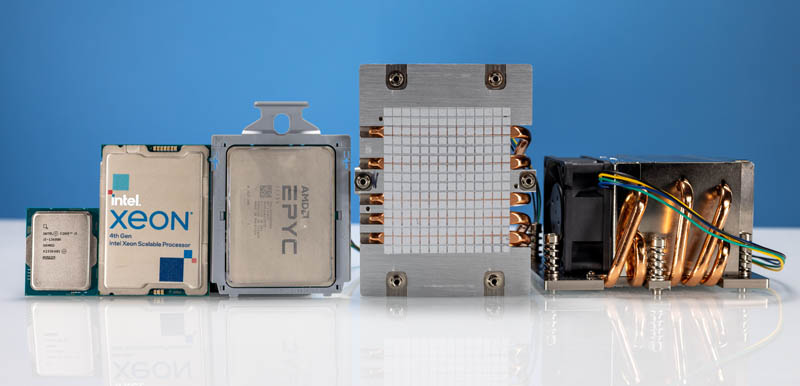
Something we noted on the J12 review was the challenge we had with the Dynatron quality, specifically the packaging quality that left the fan mounting brackets broken. The J10’s that we received were a different story. The pre-printed Shin-Etsu 7762 thermal paste looked like the printer or stencil was out of alignment. Both had thermal paste that looked off, but this one was particularly not great looking.
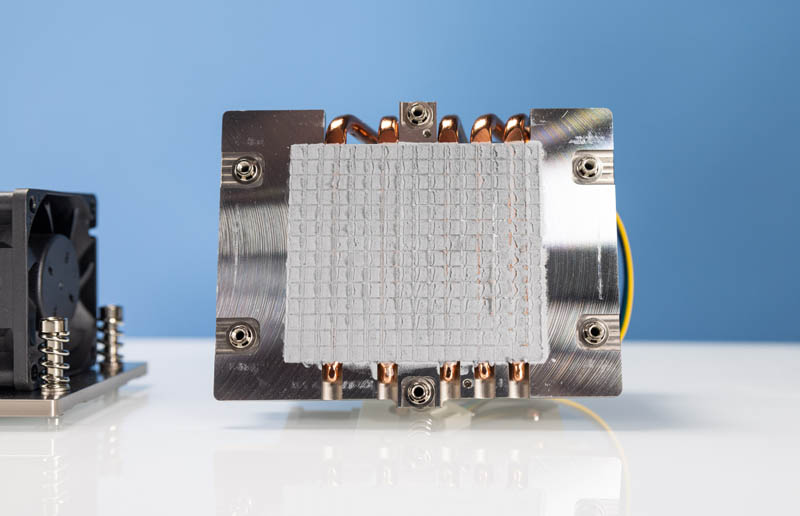
The units themselves are 2U with five heatpipes. Dynatron says that this design has the same 320W TDP (we have seen other references saying these are 300W coolers) as the 3U J12, with fewer heatpipes, less metal, and a smaller fan. This unit is only 510g.
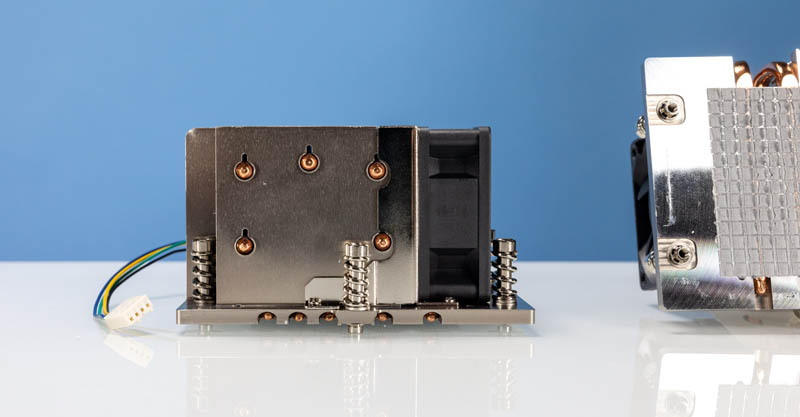
The fan here is also notable. It sits on the unit just like other older generations of 2U active heatsinks we have seen.
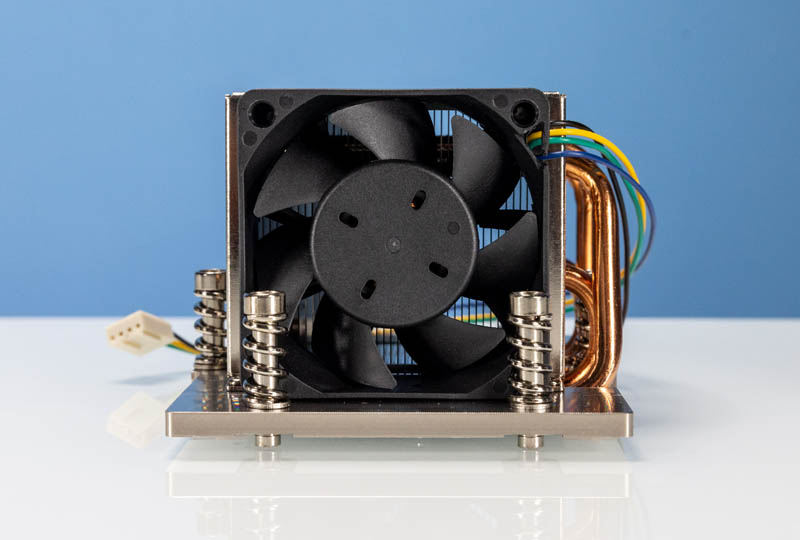
This 60mm fan unit at 100% duty cycle pushes about half the volume of air as the 3U 80mm one and is generally less efficient. That is why we were surprised to see both rated for 320W on Dynatron’s website.
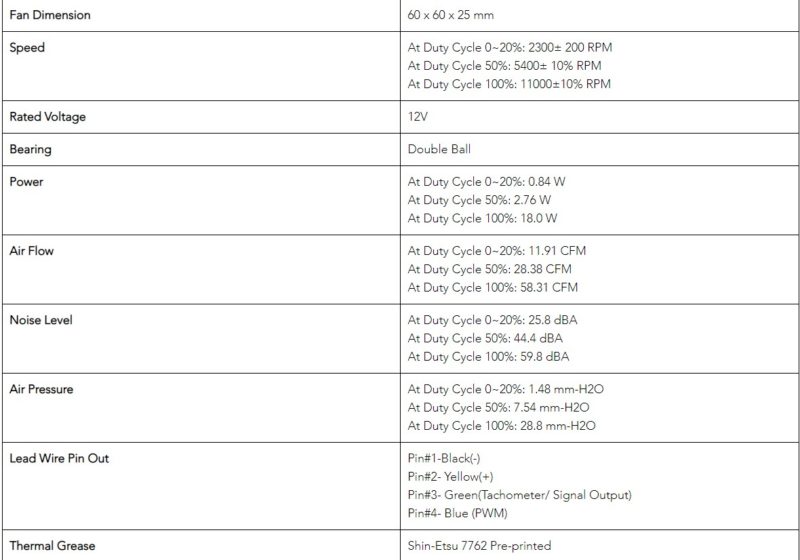
Given the J12 weighs 56% more and has a more powerful fan, we would assume that has more thermal headroom than the J10, but both are currently listed at 320W. The unit is actually quite similar to the older A38 for SP3 in many ways.
Final Words
Hopefully, you enjoyed this quick weekend piece. The Dynatron J10 2U heatsink and fan combo comes from a lineage of Dynatron coolers that STH has used for many years. Still, we purchased eight heatsinks, and more than half of them had easily identifiable quality issues, like the pre-printed thermal paste on these J10’s. Hopefully, ours were anomalies, and this is fixed later in production, but seeing two slip through Dynatron quality control was not confidence-inspiring.
Stay tuned to STH as we will be able to bring you more on AMD EPYC Genoa come launch day.

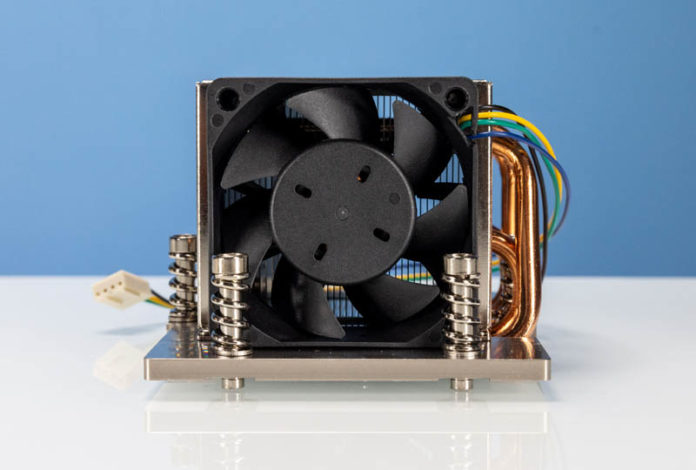

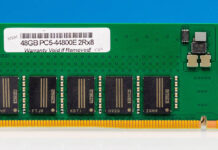

I’ve used Dynatron cooling units with Supermicro servers for decades. They get the job done and the fans rarely go bad.
I’m pretty surprised at all the QC issues you are having with dynatron – I’ve been using dynatron for years and have not seen anything this bad before. I wonder if something changed (ex, factory) resulting in poorer quality. Hopefully they can get this resolved before SP5 chips are generally available, but I suspect that a fair number of units like this have made it into the wild in inventories first, with the rate that you are seeing issues.